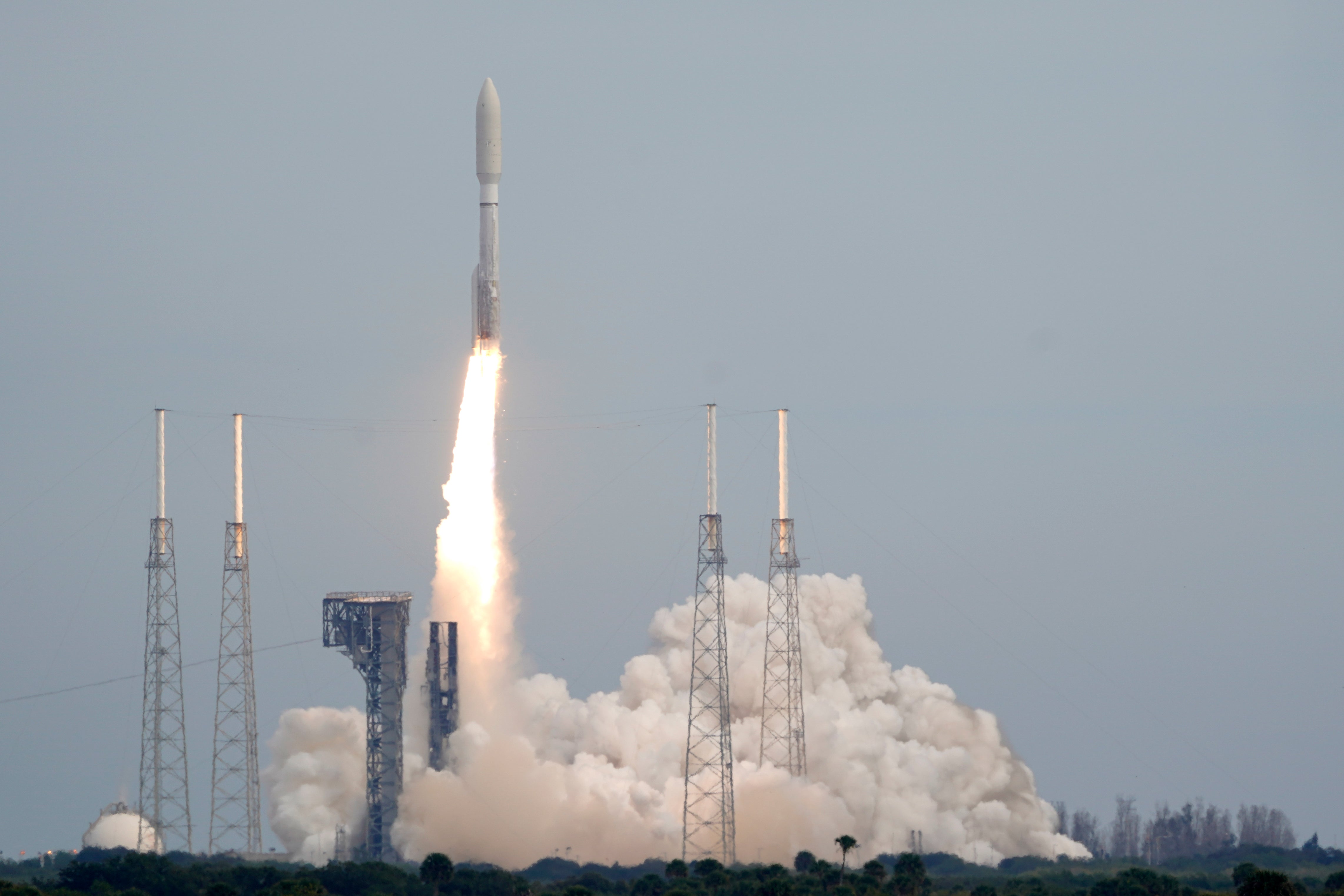Space Force successfully launches two ‘neighbourhood watch’ satellites to keep tabs on ‘critical orbit’
Geosynchronous Space Situational Awareness Program (GSSAP) satellites will orbit the earth around 22,300 miles above the equator

Space Force successfully launched two “neighbourhood watch” satellites that the newest US military service will use to keep tabs on “critical orbit.”
The satellites were launched onboard a 196ft tall United Launch Alliance Atlas 5 from Florida’s Cape Canaveral Space Force Station.
Space Force says that it will use the satellites to monitor other high altitude satellites used by communications relay stations, military spacecraft among others.
The two Geosynchronous Space Situational Awareness Program (GSSAP) satellites will orbit the earth around 22,300 miles above the equator.
At such a high altitude it takes 24 hours to complete just one orbit of Earth, allowing stable views of the planet.
Such an orbit is used mainly by commercial communications satellites, spy and military early warning stations and weather monitoring.
Space Force General John Raymond said the GSSAP satellites, built by Northrop Grumman, gave them “a neighbourhood watch capability.”
He added that the launch “allows us to better understand what’s going on in the domain, especially in a really critical orbit like geosynchronous orbit.
“Historically, the way we have surveilled or had awareness of the domain is we’ve taken observations from radars or optical capabilities, and we’ve come up with an address in space, if you will, of objects,” he said,
But he said knowing a satellite’s general location is not enough.
“If you move into a war fighting domain, you have to have more knowledge than just where something is,” he added.
“You have to have some insights into what those capabilities are, and this neighbourhood watch capability has provided us a fuller look at what’s in space, specifically in the geosynchronous domain.”
Subscribe to Independent Premium to bookmark this article
Want to bookmark your favourite articles and stories to read or reference later? Start your Independent Premium subscription today.

Join our commenting forum
Join thought-provoking conversations, follow other Independent readers and see their replies